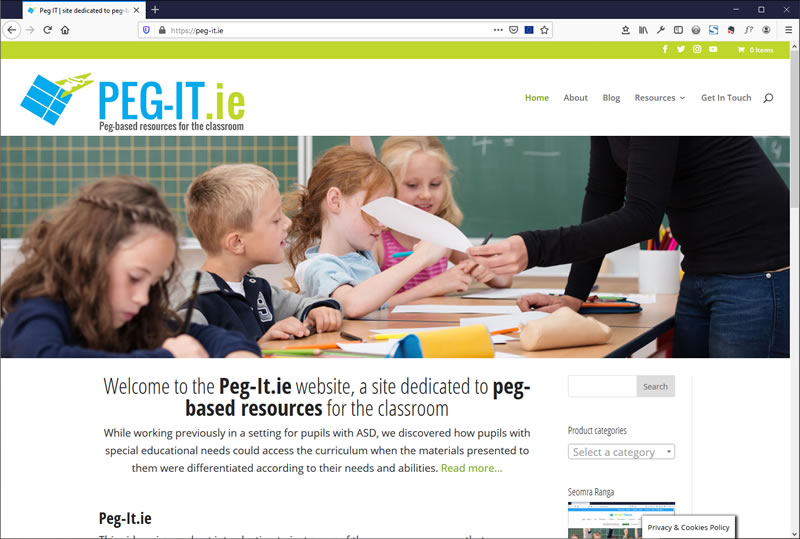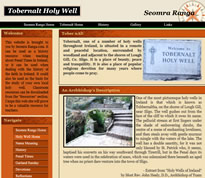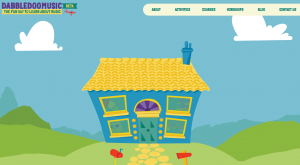 A New Method For Music Education
A New Method For Music Education
In 2008 I created a new system of music notation as part of a Masters in Music and Media Technology in Trinity College Dublin. My aim was to create a type of musical notation that could be used and understood by everyone, regardless of their previous musical experience. I wanted to create musical collaborations between professional and amateur musicians from different backgrounds and I found that traditional notation was not suitable for this purpose.
As I began working with alternative forms of musical notation I discovered that not only could I work with a greater range of musicians, but I could use this notation to teach groups of children in a more creative and engaging way. This system has developed into DabbledooMusic.com, a fully interactive online resource for primary schools that allows teachers and students to compose, listen and perform in an exciting new way.
The resources at DabbledooMusic.com take the user step by step through a series of interactive activities that include the three main strands of music education; listening, performing and composing. All parts of the primary school music curriculum are covered in five areas, each featuring a different musical character and theme; sounds and symbols, duration and sequences, rhythm, pitch, instrumental performance and composition.
Graphic Notation
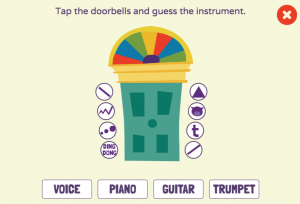 Many teachers will already be familiar with graphic notation. This is the use of shapes and symbols to represent sounds or music ideas (beyond the symbols used in traditional musical notation). Connecting sounds with symbols is something that young children are extremely good at. As soon as they have mastered the alphabet they are well practised at attaching vocal sounds to shapes and symbols, so this is where the DabbledooMusic method begins.
Many teachers will already be familiar with graphic notation. This is the use of shapes and symbols to represent sounds or music ideas (beyond the symbols used in traditional musical notation). Connecting sounds with symbols is something that young children are extremely good at. As soon as they have mastered the alphabet they are well practised at attaching vocal sounds to shapes and symbols, so this is where the DabbledooMusic method begins.
Each section of resources is divided into short activities that are designed to randomise each time you return. These can become a regular part of each music lesson, giving the children an opportunity to gain confidence through repetition and practice.
Animated Musical Notation
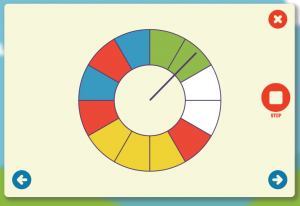 The ground-breaking aspect of DabbledooMusic is the use of animated musical notation. This is introduced in a simple way through an activity called ‘The Clock’. The class is divided into four different colour groups. Each group chooses a different vocal sound or a different group of instruments. Each group performs when the hand of the clock passes over their colour. This is one of the simplest way to create an instrumental group performance in your classroom. It is also an incredibly versatile and creative way to perform as a group. Each colour group can make whatever sound they choose with endless possibilities.
The ground-breaking aspect of DabbledooMusic is the use of animated musical notation. This is introduced in a simple way through an activity called ‘The Clock’. The class is divided into four different colour groups. Each group chooses a different vocal sound or a different group of instruments. Each group performs when the hand of the clock passes over their colour. This is one of the simplest way to create an instrumental group performance in your classroom. It is also an incredibly versatile and creative way to perform as a group. Each colour group can make whatever sound they choose with endless possibilities.
My advice is to start by dividing each group into different sounding instruments (chime bars, shakers, hand drums and triangles) and let the children play when its their turn. The key to developing the performance is to listen carefully and come up with suggestions for making changes or improvements. Simple ideas like playing faster or slower, louder or softer, higher or lower, can create a range of different performances.
This exploration of sound combinations allows the children to learn a great deal through the practical experience of making music together. They are experiencing dynamics, listening to different timbres and textures, feeling duration and pulse, and all the time being encouraged to listen critically in order to invent new ways of making the performance more interesting or more fun. One of the most rewarding aspects of this method is the creativity and enthusiasm of the children in inventing new sounds and ways of performing them.
Composition
All of the resources on DabbledooMusic were originally simple video pieces. After a year of workshops it became clear that this was not enough. Each resource needed to be interactive to allow the teachers and children to create their own compositions on their interactive whiteboards in the classroom. The final section of ‘The Clock’ allows users to fill in their own colours and create their own compositions, along with pdf worksheets where students can decide which sound will go with which colour.
Rhythm
The rhythm section of DabbledooMusic is introduced by a drumming octopus called Igor and is a firm favourite amongst students. Here we use symbols similar to those in the Front Door section, but now we have Igor to act as a metronome, keeping a steady pulse. The colour coded notation is present throughout the resources to help divide the class into sections.
This introduces the idea of rhythmic sequences in a very clear way and the character of Igor helps the class perform complex rhythms with ease. These activities also come with backing tracks which help the children to perform while listening to other complex rhythms. Watch out for the NEXT LEVEL BEATS!
Singing and Melody
The concepts of pitch, melody and singing are introduced by another favourite of the students, Jazz Cat. Again the notation is divided into different colours to help divide the class into musical section. The notation here is very similar to traditional notation with lines representing different pitches. We have used tonic solfa here to allow the children to practice singing along with special backing tracks (played by Jazz Cat). As with all previous areas there are three levels with progressive difficulty, starting with do, re, me, then a five note pentatonic scale and finally a full major scale.
Perform
The final section of resources combines all of the previous sections in a series of full performance pieces. These are designed to be fun and energizing pieces that can be performed in different ways and with large groups. They work very well for school concert or assembly. There are three pieces in the perform section at the moment, including a Pachelbel Canon remix, and we have plans to add many more.
DabbledooMusic School and Workshops
We have recently set up an online school where we will be offering online courses to teachers and schools. Teachers can sign up to short courses or information about workshops. We will soon be launching a full year curriculum with weekly music lessons emailed directly to teachers.
Join the school for free to keep up to date at DabbleDooMusic.com
Shane Mc Kenna is a musician and music teacher and co-creator of DabbledooMusic. He has worked as an independent researcher and developer of alternative music since 2008, with compositions, installations and workshops across Ireland and at International conferences.



